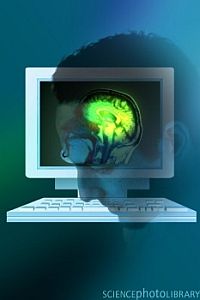Chapter 2.6: Assessment Theories
What can Tests Measure?
Through the remainder of this text we’ll discuss the major theories of personality. Along with each theory of personality development comes a different theory on how to measure it. Some see assessment as a means to uncover unconscious impulses and analyze dreams, others see it as a way to measure behavior, and still others use assessment to determine patterns of cognitions. No matter the theory, however, all personality assessment falls into three distinct categories: subjective, objective, and projective.
Subjective Tests
A good example of an subjective technique is a job interview. The purpose of an interview is to gather information, assess experience, abilities, and probably most importantly, to determine interpersonal skills and abilities to work with others. This type of technique can certainly help in gathering information and making decisions, but is is not without its negatives.
The biggest strength as well as the biggest negative is its subjectivity. If the person interviewing has any biases, positive or negative, these can obviously effect the outcome of the assessment. The interviewer who believes brunettes make better employees may give blonds undeserving low scores and may not even be aware of this tendency. It is often thought best to combine subjective techniques with objective ones to help assure personal biases do not interfere.
Objective Tests
Objective tests do not have the biases that are common among subjective measures, but they also don’t provide the breadth of information. An objective assessment is one that utilizes research to determine results. When you take an pre-employment pencil and paper test, chances are this is an objective measure. The results are given in the form of statistics and probabilities. Some of the most common objective tests include the Minnesota Multiphasic Personality Inventory, Second Edition (MMPI-2), the Myers-Briggs Type Indicator, and any of the major tests of intelligence.
Projective Tests
Projective techniques differ from the above in one major way. These tests are designed to uncover thoughts, emotions, and desires that may not be known to the test taker. In other words, unconscious impulses that may be driving current behaviors. The most common of this type include the Rorschach Inkblot Test, The Thematic Apperception Test (TAT) and the Incomplete Sentences Blank.
The strength of this technique lies in its ability to uncover issues that the other two techniques are likely to miss. The negatives include less objectivity in that these techniques typically require human interpretation rather than statistical. There are also many who argue that these tests are not as effective as the other two, and may even be harmful if interpretation is incorrect.
Assessment Batteries
The best way to gain the positives of each technique while minimizing the negative is to use a combination of all three. When different approaches of assessment are used, it is called an assessment battery. If you want to assess depression and functioning in an individual, the best way might be to use the following approach:
1. Interview the person and ask subjective questions about his or her feelings, thoughts and behaviors. This will gather information in the person’s own words, allowing the interview to better understand the person. This could also alert the interview to associated issues such as anxiety. (Subjective)
2. Utilize one or more of the many depression tests to compare the person’s symptoms to others. Knowing now that anxiety may also be an issue, an anxiety test could also be given. (Objective)
3. Administer one or more projective tests to look at issues that unconscious issues or those that were not looked at by the other measures. (Projective)